

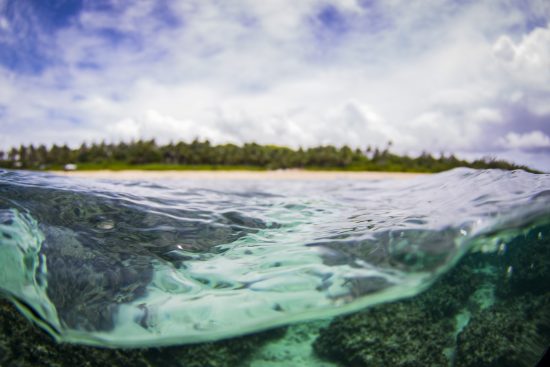
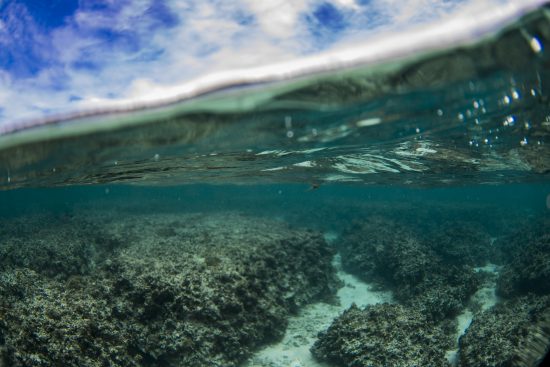
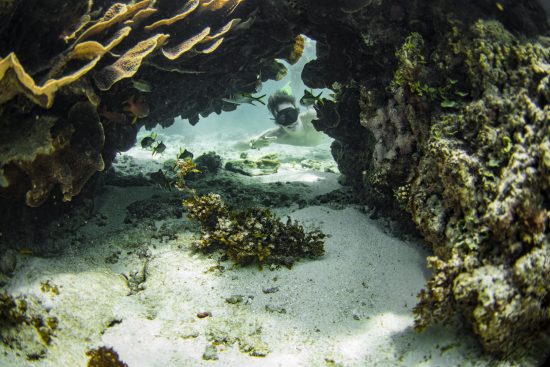
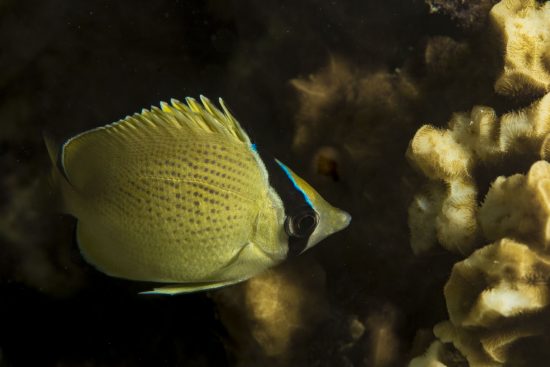
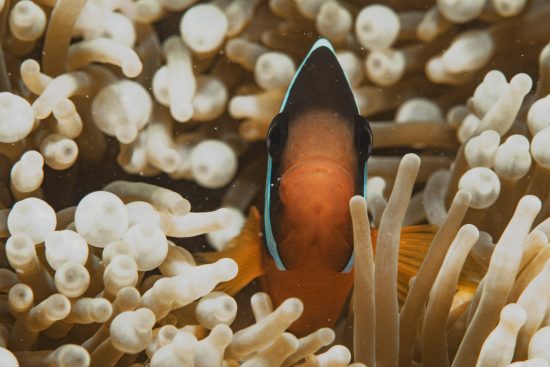
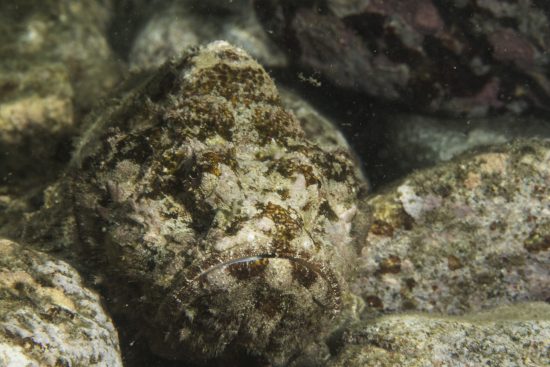
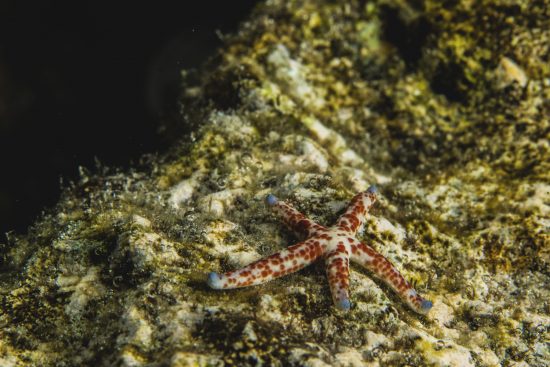
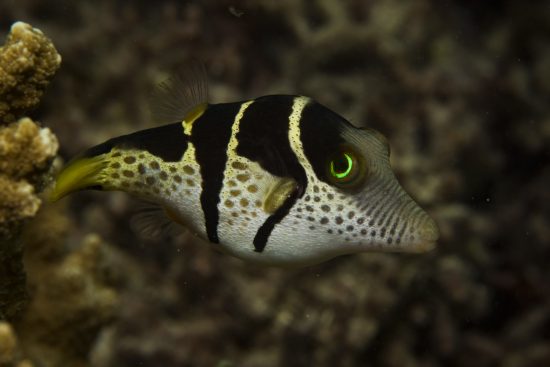
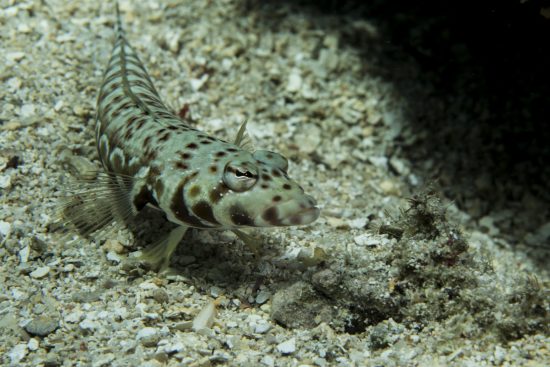
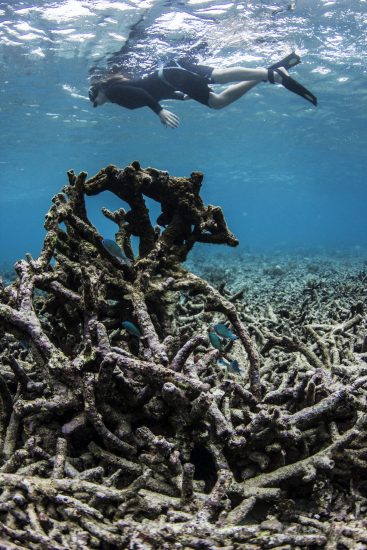
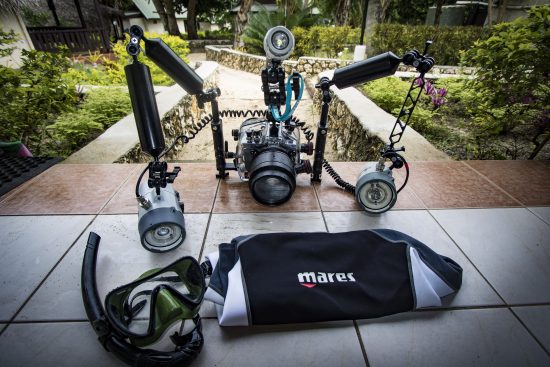
Here's the worst case scenario. You've planned a brilliant dive holiday to the dive destination of your dreams. You have a week of diving deep walls in crystal clear water, and you have convinced yourself you will have that once in a lifetime experience with a beautiful pelagic species (manta rays?), and of course there will be plenty of coral, there is absolutely nothing that can stop you from having the dives of your life except, if you're like me, the weather. . .
Yep, wherever I go, doesn't matter what time of year, or how far I travel, no matter how good my planning is, the bad weather always seems to follow me.
Luckily, I have learnt from my past few expeditions and now have a contingency plan in place so that my dive getaway is not wasted.
I could spend my time inside crying into my mask, or I could take the time to enjoy the simpler (shallower) things in diving.
Depending on your location, when bad weather hits, the boats may not be able to launch or get out safely, but don't let this bring your dive holiday to a not-so-salty end. This is where the beauty of barrier reefs and lagoons come in. As its name suggests, a barrier reef is a barrier to the ocean, and presuming its not a cyclone or hurricane force storm causing swells to break over that barrier, then that idyllic looking lagoon out your front door is the perfect diving alternative.
With bad weather following me all over the Pacific, I have put together a short list about why lagoons are so great, and why you should put down that beer that you are crying into at the bar to go and explore the magnificent lagoons on offer. My new dive motto is "If you don't go , you'll never know, so just go”!!
You will NEVER get bored
OK, so your dreams of pelagic interactions are probably a little far fetched if you're diving in a lagoon (although ya never know) but there are plenty of other cool creatures to see. Lagoons are packed full of life, reef fish, crustaceans, star fish, sea snakes, schooling fish, stingrays, sharks and coral.
There are literally thousands of varieties of fish that live in a reef, it's like a rainforest. Set yourself a challenge and see how many species you can count in a day. From parrot fish chewing on bits of coral, to schools of bait fish and lizard fish lying in wait for their next meal, the options are endless. And if cute clown fish hanging out in their anemone homes don't do it for you, then take a closer look into the holes in the reef for decorator crabs, urchins, starfish, lobsters and cleaner shrimp.
It's like snorkeling in a bath
Because lagoons are usually so shallow, the water can be a lot warmer than the open sea. Think diving in your bath tub or, even in some spots, your spa pool (hot tub) but with a bonus, it's full of coral reef and colorful fish. Sadly, in some locations, that same warm water has negative effects on the coral, causing it to bleach and eventually die, has anyone seen Chasing Coral?
You could literally spend all day there ! ( I do!)
With so many different species of marine life in one location, you really could spend hours and hours in the lagoon. Check it out at different times of the day as well, life will vary if you're up early and in the lagoon before the temperature gets up, likewise if you're in as the sun is setting.
Conduct your own research, find out what species are more active at what time of day, you may be surprised!
Lagoon exploration is great for families
If you're on a family dive holiday then be sure to get the kids involved. Lagoons are generally safe for all ages and abilities, and the amount of life in there is guaranteed to keep kids entertained for hours. Take your kids on a snorkel safari. Even if they are not that into snorkeling, I can almost guarantee that they will love it. Grab your waterproof notepad and get your future Jacques Cousteau's to write down how many fish species they can find, perhaps get them to draw a picture of their favorite fish, lagoons are littered with opportunities for fun and adventure.
Just DO NOT touch ANYTHING !!
Although picturesque on the surface, lagoons are a 'look but don't touch' kinda location. Home to urchins, fire corals, scorpion fish, lion fish, moray eels, cone shells stingrays, reef sharks and other bitey, stingy things, it is important to avoid touching anything, especially any coral, as most will have stinging polyps that will ensure you become very uncomfortable if they rub on your skin, plus its not good for the coral! Oh and try to keep your feet off the sea floor, stone fish don't take well to being stepped on . . .
Equipment for lagoon exploration
A mask and snorkel is sufficient for most lagoons, but to make the most of it, some sort of sun and thermal protection is important. You may be spending longer on top of the water, and with the sun bearing down on your back, and the water magnifying it, it's a recipe for a good sunburn. Fins are helpful of course too, the shorter the better in this instance. If you are planning on taking photos in the lagoon, then a few kilos of lead will help you to stay down as well.
Sun protection - The water is generally a lot warmer than in the open ocean, so a rash shirt or thin wet suit is best for keeping the sun off and keeping the stingy things away. I use the Long Sleeve Thermo Guard or for extra protection the 2nd Skin Shorty
Foot protection - As mentioned earlier, the lagoon is full of sharp, spiky, stinging things, so covered footwear like hard-soled booties are recommended in case you accidentally put your feet down on an unsuspecting critter.
A good mask and snorkel is essential to make the most of your lagoon experience. I use the Essence Liquidskin.
Fins - You don't need long freediving fins as you will only be snorkelling in a few meters or less of water. These could do damage to the coral and are awkward in very shallow water. I use the X-Stream fins.
It's important for kids to enjoy their lagoon experience too, a shorty wet suit, mask, snorkel and fins are highly recommended, find them in the Aquazone Line.
Your camera - Bring your GoPro or camera, these shallow, clear lagoon waters are perfect for selfies and for practicing your video and photography. It’s also good to have a camera handy for that chance meeting with a reef shark or turtle. In the lagoon, I almost always shoot macro subjects, so a 100m macro lens with strobes and my Canon 7dmk2 is my go-to lagoon setup.
Be reef safe !
I can't reiterate this enough, coral reefs are a crucial part of our planet. Even if they only make up 0.1% of our ocean, they support 25% of all marine species on the planet. Hundreds of millions of people rely on coral reefs - from fishing to tourism (heard of the Great Barrier Reef?), coral reefs are a crucial part of our existence.
Put simply, we need coral reefs! We have already lost half of the worlds shallow water coral reefs, and scientists expect that, at the rate of ocean warming, the rest could disappear in the next few decades.
As a lagoon explorer, do your part in protecting coral by covering yourself in a wetsuit, making sure you use 'reef safe' suncream and also ensuring you do not trample on live coral or pull yourself along it whilst exploring these incredible rainforests of the ocean.
For more lagoon images please visit my website.
Written and photographed by Dan Westerkamp.
 Dan
Dan 22nd May 2020
22nd May 2020